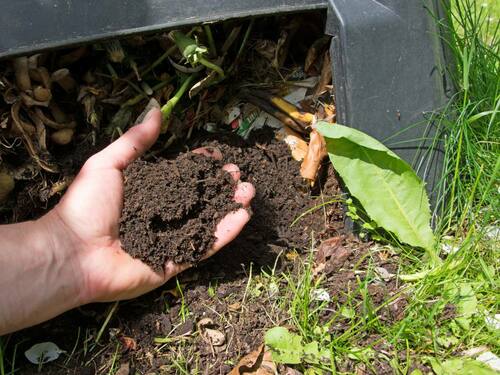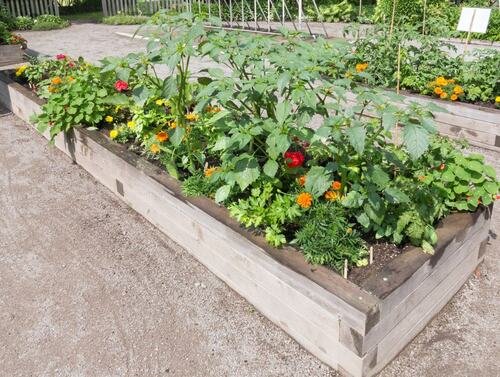The Science Behind Composting: How it Works and Why it Matters
Introduction to Composting Science
Composting is often viewed as a simple process of turning kitchen scraps and yard waste into rich, dark soil. However, beneath this seemingly straightforward transformation lies a complex and fascinating world of scientific process. Understanding the science behind composting not only enhances our appreciation for this natural recycling system but also empowers us to create more effective compost piles, contributing to healthier gardens and a more sustainable environment.
At its core, composting is the biological decomposition of organic matter under controlled conditions. This process harnesses the power of nature’s recyclers—microorganisms—to break down complex organic materials into simpler, more stable substances. The result is compost, a nutrient-rich material that can significantly improve soil health and plant growth.
Why Understanding the Science Matters:
- Optimized Composting: Knowledge of the underlying science allows you to create ideal conditions for decomposition, speeding up the process and producing higher-quality compost.
- Problem-Solving: Understanding the science helps you diagnose and solve common composting issues, such as odors or slow decomposition.
- Environmental Impact: Grasping the scientific principles behind composting highlights its crucial role in reducing greenhouse gas emissions and landfill waste.
- Improved Gardening: A scientific approach to composting leads to better soil amendment practices, resulting in healthier plants and more productive gardens.
By delving into the science of composting, we can unlock its full potential as a powerful tool for sustainable living and effective waste management.
The Decomposition Process

Compost is Taken from the Bottom of an Outdoor Bin
The heart of composting lies in the decomposition process, a complex interplay of biological, chemical, and physical factors. Understanding these elements is key to mastering the art and science of composting.
Microorganisms at Work
The true heroes of composting are the countless microorganisms that break down organic matter. These tiny decomposers include:
- Bacteria: The primary decomposers in most compost piles, bacteria are responsible for much of the initial breakdown of organic materials.
- Fungi: Including both molds and yeasts, fungi are particularly adept at breaking down tough, woody materials like cellulose and lignin.
- Actinomycetes: These filamentous bacteria give compost its earthy smell and are crucial in forming humus, the stable end product of composting.
- Protozoa and Rotifers: These larger microorganisms feed on bacteria and help maintain the bacterial population balance.
Each of these microorganisms plays a unique role in the composting process, working in concert to transform raw organic matter into nutrient-rich compost.
The Composting Food Web

A Close-up of Mature Compost
The composting process involves a complex food web:
- Primary Consumers: Bacteria and fungi directly consume the organic matter.
- Secondary Consumers: Nematodes and protozoa feed on primary consumers.
- Tertiary Consumers: Mites, springtails, and other small insects eat the secondary consumers.
This intricate web ensures efficient decomposition and nutrient cycling within the compost pile.
Chemical Reactions
While microorganisms drive the composting process, a series of chemical reactions facilitates the transformation of organic matter into compost.
Carbon-to-Nitrogen Ratio
One of the most critical factors in composting is the carbon-to-nitrogen (C:N) ratio of the materials in your pile. This ratio significantly impacts the speed and efficiency of decomposition:
- Ideal C:N Ratio: 25-30:1
- Carbon-rich Materials: Dry leaves, straw, wood chips (often called “browns”)
- Nitrogen-rich Materials: Fresh grass clippings, kitchen scraps, manure (often called “greens”)
Balancing these materials is crucial for optimal composting. Too much carbon can slow down the process, while excess nitrogen can lead to unpleasant odors and nutrient loss.
Heat Generation
As microorganisms break down organic matter, they release energy in the form of heat. This heat is a byproduct of their metabolic processes and plays several important roles in composting:
- Accelerates Decomposition: Higher temperatures speed up chemical reactions and microbial activity.
- Kills Pathogens: Sustained high temperatures (>131°F/55°C) can eliminate harmful bacteria and weed seeds.
- Indicates Active Composting: A warm compost pile is a sign of healthy microbial activity.
The composting process typically goes through three temperature phases:
- Mesophilic Phase (50-104°F/10-40°C): Initial breakdown by mesophilic bacteria
- Thermophilic Phase (104-150°F/40-65°C): High-temperature decomposition by thermophilic microorganisms
- Cooling and Maturation Phase: As easily degradable materials are consumed, the pile cools and matures
pH Changes
The pH of a compost pile typically follows a predictable pattern:
- Initially slightly acidic due to the formation of organic acids
- Becomes more alkaline as these acids break down
- Stabilizes into a neutral pH (6.5-8) in finished compost
Monitoring and managing pH can help optimize the composting process and ensure a high-quality end product.
The Benefits of Composting

A Gardener Adds Compost Around a New Plant
Understanding the science behind composting reveals its numerous benefits, both for the environment and for soil health.
Environmental Impact
Composting offers significant environmental advantages:
- Reduction in Landfill Waste: By diverting organic waste from landfills, composting reduces emissions of methane, a potent greenhouse gas.
- Decreased Greenhouse Gas Emissions: Proper composting produces primarily carbon dioxide, which is less harmful than methane in terms of global warming potential.
- Water Conservation: Compost-rich soil retains moisture more effectively, reducing the need for irrigation.
- Reduced Chemical Use: Compost can replace synthetic fertilizers, decreasing water pollution from runoff.
Soil Health
The scientific processes involved in composting result in a product that significantly improves soil quality :
- Enhanced Soil Structure: Compost improves soil aggregation, leading to better aeration and water retention.
- Increased Nutrient Content: Compost adds essential nutrients to the soil in forms readily available to plants.
- Improved Microbial Activity: Compost introduces beneficial microorganisms to the soil, enhancing its biological activity.
- pH Regulation: Mature compost can help buffer soil pH, making it more suitable for a wider range of plants.
- Pest and Disease Suppression: The diverse microbial community in compost can help suppress soilborne plant pathogens.
Common Misconceptions
Despite its scientific basis, composting is often surrounded by myths and misunderstandings. Addressing these can lead to more effective composting practices.
-
Myth:
Compost piles should smell bad.
Reality: A well-managed compost pile should have an earthy odor. Bad smells indicate imbalances in the composting process. -
Myth
:
Adding fertilizer speeds up composting.
Reality: Proper C:N ratio and moisture content are more important than adding fertilizers. -
Myth:
Compost is just rotted organic matter.
Reality: Composting is a controlled process that results in a stable, nutrient-rich product different from simple decay. -
Myth:
All organic materials can be composted together.
Reality: Some materials (meat, dairy, diseased plants) require special composting methods to avoid problems.
Conclusion

Compost Can Help Vegetable Gardens Thrive
The science behind composting reveals a complex and fascinating process that goes far beyond simply piling up organic waste. By understanding the roles of microorganisms, the importance of chemical balances, and the stages of decomposition, we can create optimal conditions for efficient composting. This knowledge not only helps us produce higher-quality compost but also maximizes the environmental benefits of this natural recycling process.
Composting is a powerful tool in our journey toward sustainability, offering a way to reduce waste, improve soil health, and decrease our reliance on synthetic fertilizers. As we face global challenges like changes in weather patterns and soil degradation, the simple act of composting, informed by scientific understanding, becomes an important step toward a more sustainable future.
For expert advice on composting techniques tailored to your specific needs and environment, contact Arborist Now . Our team of certified arborists is dedicated to promoting sustainable practices in landscaping and tree care.
We may receive affiliate compensation for some of the links below at no cost to you if you decide to make a purchase.


